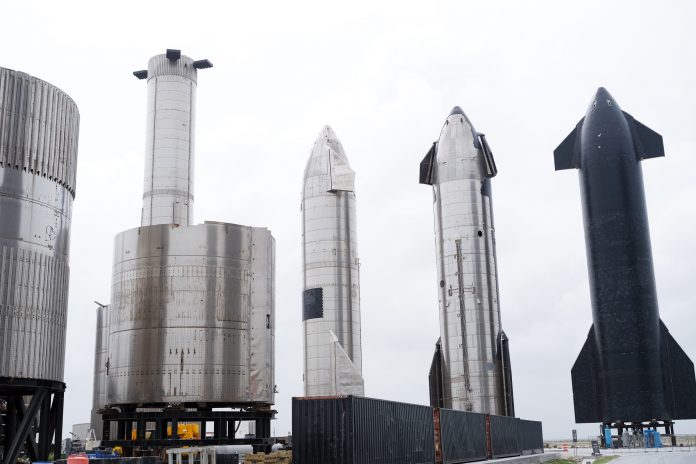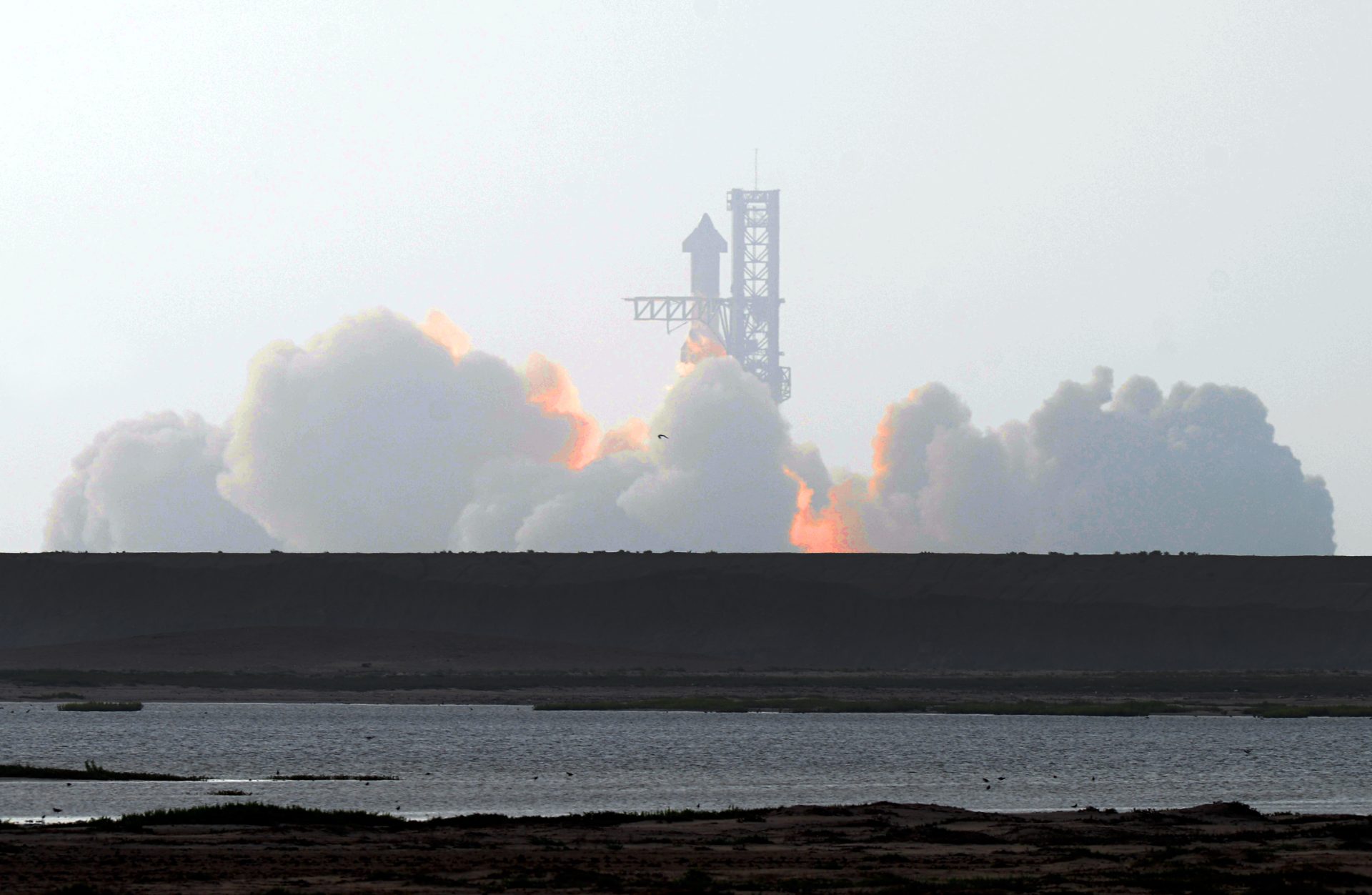
|
Only have a minute? Listen instead
Getting your Trinity Audio player ready...
|
SpaceX founder and CEO Elon Musk earlier this week announced on X, formerly known as Twitter, that he was informed that approval for a second Starship orbital flight attempt “should happen” in time for the launch to happen on Friday.
He was correct: The Federal Aviation Administration announced shortly after 3 p.m. on Wednesday that it had granted the license. Friday is SpaceX’s primary target date to launch its nearly 400-foot-tall Starship Super Heavy combo from Boca Chica/Starbase.
The agency announced Oct. 31 that it had completed the safety review for the company’s application but that the environmental review was ongoing, though that review appears to be complete.
“The FAA has given license authorization for the second launch of the SpaceX Starship Super Heavy vehicle,” the agency said. “The FAA determined SpaceX met all safety, environmental, policy and financial responsibility requirements.”
Starship SN25, with six engines, and the 33-engine Super Heavy BN9 booster, have undergone a series of tests, including static-fire engine tests, over the past several weeks in preparation for the next launch.
SpaceX’s first orbital flight attempt, using Starship SN24 and Super Heavy BN7, ended four minutes after launch on April 20 when the vehicle automatically self-destructed miles above the Gulf after stage separation failed to occur and the rocket veered out of control. The goal this time is the same, to get Starship into orbit for a single trip around Earth before landing it in the ocean inside the Navy’s Pacific Missile Range Facility off the coast of Kauai, Hawaii.
The first stage (Super Heavy) should separate from the second stage (Starship) about 170 seconds after liftoff and land in the Gulf roughly 20 miles offshore. Although Starship-Super Heavy is being developed for reuse to drastically reduce the cost of ferrying astronauts and cargo in space and around Earth, neither stage will be recovered during this mission whether it succeeds or not.

However, according to a Space Act Agreement with NASA as part of the agency’s Collaborations for Commercial Space Capabilities (CCSC-2), SpaceX expects to launch its first payload-carrying Starship the first quarter of 2024, and in the third quarter recover the first Starship for reuse.
The FAA announced on Sept. 8 that it had completed its “mishap investigation” into the April 20 launch, which also shattered Starship’s reinforced concrete launchpad at Boca Chica, sending chunks of it flying hundreds of feet in all directions. The launch pad was rebuilt and a water-deluge system installed under the launch mount to dampen the intensity of the blast at liftoff.
Starship SN25 and Super Heavy B9 feature improvements over Starship SN24 and Super Heavy B7, including upgraded automated flight-termination and stage-separation systems. Musk said in June that “well over a thousand” changes had been made to the rocket and said the second orbital flight attempt has a better chance at succeeding than the first one, which he gave a 50/50 chance of succeeding.
“So I think the probability of this next flight working, getting to orbit, is much higher than the last one,” he said during a “Twitter (now X) Spaces” discussion over the summer. “Maybe it’s like 60 percent. It depends on how well we do at stage separation.”
Editor’s note: This story was updated with the Federal Aviation Administration’s announcement shortly after 3 p.m. Wednesday that it had granted the license.



